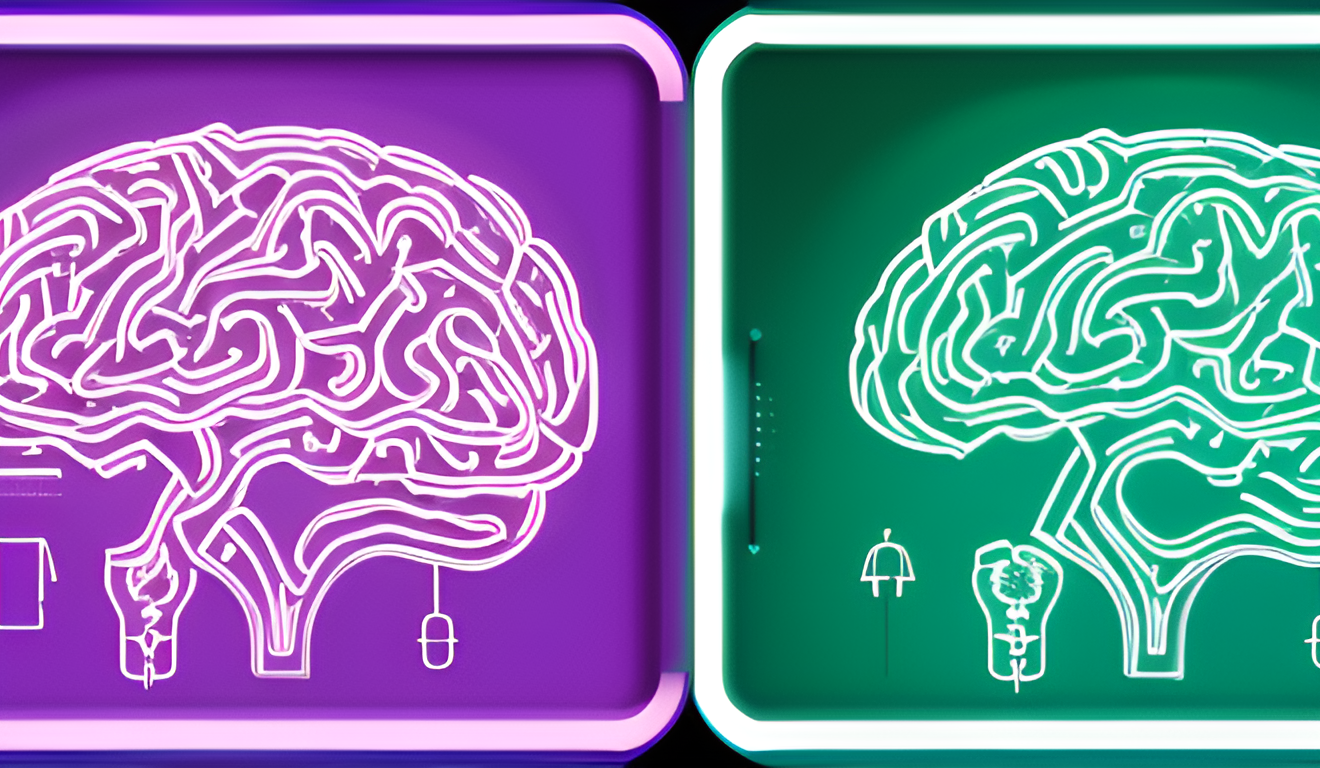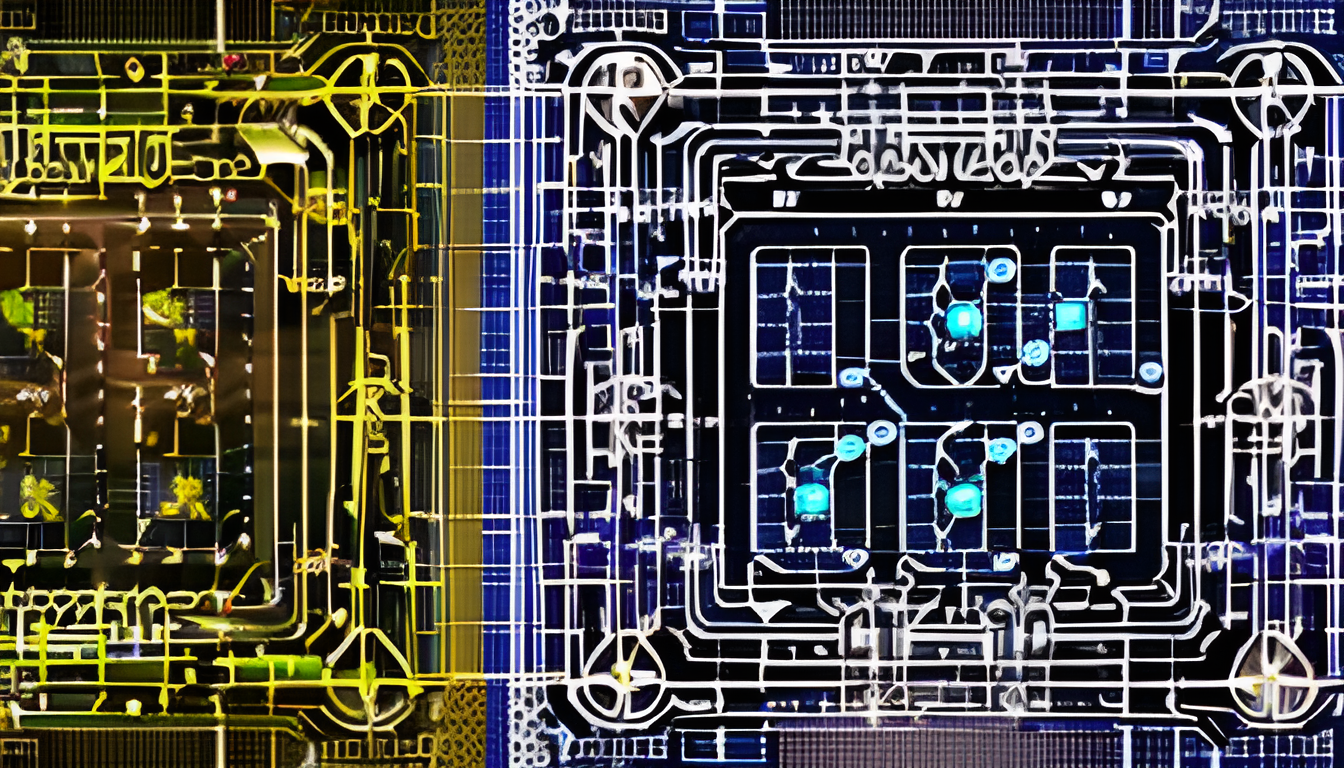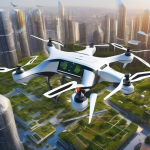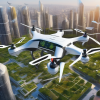Artificial Intelligence vs. the Human Brain: Similarities and Differences

In today’s rapidly evolving technological landscape, the comparison between artificial intelligence (AI) and the human brain has become a hot topic of discussion. Both are capable of remarkable feats, yet they operate in fundamentally different ways. This article delves into the intricate relationship between these two entities, shedding light on their similarities, differences, and what the future holds for both technology and cognitive science.
Artificial intelligence refers to the simulation of human intelligence processes by machines, particularly computer systems. These processes include learning, reasoning, and self-correction. Today, AI exists in various forms, from simple algorithms that recommend products based on your browsing history, to complex systems that can drive cars autonomously. The potential applications of AI are vast, spanning sectors such as healthcare, finance, and education, where it can enhance efficiency and decision-making.
The human brain is a marvel of biological engineering, composed of approximately 86 billion neurons that communicate through trillions of synapses. This intricate network allows for a wide range of functions, from basic survival instincts to complex reasoning and creativity. Understanding the brain’s structure and functions is crucial, as it governs not only our thoughts and actions but also our emotions and social interactions.
Neurons are the fundamental building blocks of the brain, transmitting information through electrical and chemical signals. Synapses are the connections between neurons that facilitate communication. Together, they create pathways that are essential for learning and memory. The efficiency of these pathways can be likened to a highway system, where the more traffic (or information) that flows, the better the route becomes.
One of the brain’s most fascinating features is its neuroplasticity, the ability to reorganize itself by forming new neural connections throughout life. This adaptability is vital for learning and recovery from injuries. Just as a river carves new paths through the landscape, the brain continuously reshapes itself in response to experiences and challenges.
Cognitive functions such as memory, attention, and problem-solving are processed within the brain’s intricate networks. Each function relies on a complex interplay of neurons and synapses, allowing us to navigate the world, make decisions, and solve problems. This complexity is what sets the human brain apart from AI, which, despite its impressive capabilities, lacks the depth of emotional and contextual understanding that humans possess.
Machine learning, a subset of AI, employs algorithms that enable machines to learn from data and improve over time. This process can be compared to how humans learn through experience. However, while AI can analyze vast amounts of data quickly, it does not experience learning in the same emotional or contextual manner that humans do.
Despite their differences, AI and the human brain share some intriguing similarities. Both systems exhibit learning, adaptation, and problem-solving capabilities, albeit in different ways. For instance, just as humans learn from experiences and adjust their behaviors, AI systems utilize algorithms that allow them to learn from data patterns.
Both AI and the human brain employ learning processes that can be categorized into techniques such as reinforcement learning and associative learning. In reinforcement learning, for example, both systems learn from the consequences of their actions—AI through rewards and penalties, and humans through emotional feedback.
When it comes to problem-solving, both AI systems and the human brain analyze data and make decisions. However, while AI relies on computational power and data analysis, the human brain uses intuition and emotional context, which can lead to different outcomes in similar situations.
While AI and the human brain share some similarities, key differences set them apart, particularly in areas such as emotional intelligence, consciousness, and creativity. Understanding these distinctions is essential for grasping the limitations and potential of AI.
Emotional intelligence is a realm where humans excel. It encompasses the ability to understand and manage emotions, both in ourselves and in others. This skill is crucial for effective decision-making and social interactions. In contrast, AI lacks genuine emotional understanding, which limits its ability to navigate complex human relationships.
Consciousness and self-awareness are philosophical concepts that raise profound questions about the nature of existence. While humans possess a sense of self and awareness of their thoughts and feelings, AI operates without consciousness. It processes information but does not have subjective experiences, making it fundamentally different from the human mind.
Understanding Artificial Intelligence
Artificial Intelligence, or AI, is a term that has become increasingly prevalent in our daily conversations, often evoking images of futuristic robots and advanced technology. But what exactly is AI? At its core, artificial intelligence refers to the simulation of human intelligence processes by machines, particularly computer systems. This encompasses a variety of capabilities, including learning, reasoning, problem-solving, and even understanding natural language.
AI can be categorized into several types, each with its own unique capabilities and applications. The most common classifications include:
- Narrow AI: Also known as weak AI, this type is designed to perform a specific task, such as voice recognition or image classification. Examples include virtual assistants like Siri and Alexa.
- General AI: This is a theoretical form of AI that possesses the ability to understand, learn, and apply knowledge across a wide range of tasks, much like a human. While we are not there yet, researchers are continually working towards this goal.
- Superintelligent AI: This refers to an AI that surpasses human intelligence in every aspect, from creativity to problem-solving. This concept raises significant ethical and philosophical questions about the future of humanity.
The potential applications of AI are vast and varied, impacting numerous sectors such as healthcare, finance, education, and entertainment. For instance, in healthcare, AI systems can analyze medical data to provide more accurate diagnoses and personalized treatment plans. In finance, algorithms can predict market trends and assist in investment strategies.
As we continue to explore the capabilities of AI, it’s essential to understand not only its benefits but also the challenges it presents. Issues such as data privacy, ethical considerations, and the potential for job displacement are critical discussions that need to be addressed as we integrate AI into our lives.
Exploring the Human Brain
The human brain is a marvel of biological engineering, a complex organ that orchestrates our thoughts, emotions, and actions. Weighing about three pounds, it contains approximately 86 billion neurons that communicate through trillions of connections known as synapses. This intricate network forms the foundation of our cognitive abilities, allowing us to process information, learn, and adapt to our surroundings. Understanding the brain’s structure and functions is crucial for unlocking the mysteries of human behavior and cognition.
At its core, the brain is divided into several key regions, each responsible for different functions. The cerebral cortex, often referred to as the brain’s outer layer, plays a vital role in higher cognitive functions such as reasoning, problem-solving, and decision-making. Below the cortex, the limbic system governs emotions and memory, while the brainstem controls essential life-sustaining functions like breathing and heart rate. This division of labor allows the brain to operate efficiently, much like a well-coordinated orchestra.
Neurons are the fundamental building blocks of the brain. Each neuron can connect to thousands of others, forming a vast communication network. When a neuron fires, it sends an electrical signal down its axon, releasing neurotransmitters that cross synapses to transmit information to neighboring neurons. This process is crucial for learning and memory, as the brain continuously reorganizes these connections based on our experiences. Just like a garden that flourishes with care, the brain thrives on stimulation and engagement.
One of the most fascinating aspects of the brain is its ability to change and adapt, a phenomenon known as neuroplasticity. Throughout our lives, the brain forms new neural connections in response to learning, injury, or environmental changes. This adaptability is what allows us to recover from brain injuries and learn new skills, demonstrating that our cognitive abilities are not fixed but can evolve over time.
The brain is responsible for a wide range of cognitive functions, including memory, attention, and problem-solving. Each function relies on intricate neural networks that work together seamlessly. For instance, when we solve a problem, various brain regions collaborate, integrating information from our memories and focusing our attention to arrive at a solution. This synergy is what makes human cognition so powerful and unique.
Neurons and Synapses
The human brain is a marvel of biological engineering, and at its core are neurons and synapses, the essential building blocks that facilitate our thoughts, emotions, and actions. Neurons are specialized cells that transmit information throughout the brain and body. They communicate with each other through synapses, which are the tiny gaps between neurons. This intricate dance of signals is what allows us to learn, remember, and react to our environment.
Imagine neurons as the wires in a complex electrical circuit. Each neuron can connect to thousands of others, creating a vast network that processes information at lightning speed. When you learn something new, your brain forms new synapses, strengthening the connections between neurons. This is akin to adding more wires to a circuit, enhancing its capacity to carry information. The more you use these connections, the stronger they become, illustrating the principle of neuroplasticity.
Neuroplasticity is the brain’s remarkable ability to reorganize itself by forming new neural connections throughout life. This adaptability is crucial for learning and recovery from injuries. For instance, if one part of the brain is damaged, other areas can sometimes take over its functions, much like rerouting electricity in a broken circuit. This ability to adapt is what makes the human brain so unique compared to artificial intelligence systems, which, while powerful, do not possess the same level of flexibility.
Furthermore, synapses can be categorized into two types: excitatory and inhibitory. Excitatory synapses increase the likelihood of the firing of the receiving neuron, while inhibitory synapses decrease that likelihood. This balance is crucial for maintaining the brain’s overall functionality and preventing overstimulation, which could lead to issues such as anxiety or seizures.
In summary, neurons and synapses are fundamental to understanding how the human brain functions. Their ability to transmit and process information not only defines our cognitive abilities but also highlights the complexity of human thought and behavior compared to artificial intelligence systems. As we delve deeper into the intricacies of the brain, we uncover the profound capabilities that set us apart from machines.
Neuroplasticity
is one of the most fascinating aspects of the human brain, showcasing its remarkable ability to adapt and reorganize itself. Imagine your brain as a city; every time you learn something new or have a new experience, it’s like building new roads or tearing down old ones. This dynamic process allows the brain to form new neural connections, which is crucial for learning and recovery from injuries.
Throughout our lives, our brains are constantly rewiring themselves. This flexibility means that, even as we age, we can continue to learn and adapt. For instance, when we practice a skill, such as playing a musical instrument or learning a new language, our brain strengthens the connections associated with that skill, making it easier to perform over time. This is like training a muscle; the more you work it, the stronger it becomes.
Neuroplasticity can be categorized into two main types:
- Functional Plasticity: This refers to the brain’s ability to shift functions from damaged areas to undamaged areas. For example, if one part of the brain is injured, another part may take over the function that was lost.
- Structural Plasticity: This involves the brain’s ability to physically change its structure in response to learning and experience. This can include the growth of new neurons or changes in synaptic connections.
The implications of neuroplasticity are profound. It not only plays a significant role in rehabilitation after brain injuries but also highlights the potential for lifelong learning. Understanding neuroplasticity can lead to innovative therapies for conditions like stroke, traumatic brain injury, and even mental health disorders. The brain’s ability to adapt is a testament to its resilience, reminding us that it’s never too late to learn something new or recover from setbacks.
Cognitive Functions
The human brain is an intricate masterpiece, functioning like a highly sophisticated computer that processes information in real-time. At its core, cognitive functions are the mental processes that enable us to think, learn, remember, and interact with the world around us. These functions can be broadly categorized into several key areas, each playing a vital role in shaping our experiences and behaviors.
One of the most fascinating aspects of cognitive functions is memory. Memory allows us to store and retrieve information, helping us learn from past experiences. It’s not just about remembering facts; it’s about creating a tapestry of experiences that inform our decisions and shape our identities. The brain employs different types of memory, such as short-term memory, which holds information temporarily, and long-term memory, which retains information over extended periods.
Attention is another critical cognitive function that determines how we focus on specific stimuli while ignoring distractions. Imagine trying to read a book in a noisy café; your ability to concentrate is what allows you to absorb the material despite the chaos around you. This selective attention is essential for effective learning and problem-solving, as it enables us to prioritize information that matters.
Problem-solving is where cognitive functions truly shine, as they involve analyzing situations, generating solutions, and making decisions. The brain uses various strategies, such as trial and error or heuristics, to navigate challenges. For example, when faced with a puzzle, our brains activate different regions to brainstorm potential solutions, showcasing the incredible adaptability of our cognitive processes.
In summary, cognitive functions are the foundation of human thought and behavior. They encompass a range of abilities, including memory, attention, and problem-solving, all of which contribute to our unique experiences. Understanding how these functions work not only enriches our knowledge of the brain but also sheds light on the potential for enhancing cognitive abilities through practices like neuroplasticity and continuous learning.
Machine Learning Techniques
Machine learning, a fascinating subset of artificial intelligence, is revolutionizing how we interact with technology. At its core, machine learning involves algorithms that allow computers to learn from data and improve their performance over time without being explicitly programmed. Think of it as teaching a child to recognize different animals; instead of giving them a manual, you show them pictures and let them figure it out. This process of learning can be broken down into several key techniques:
- Supervised Learning: In this approach, the algorithm is trained on a labeled dataset, meaning it learns from input-output pairs. For instance, if you want to train a model to identify cats in pictures, you would feed it many images labeled “cat” and “not cat.”
- Unsupervised Learning: Here, the algorithm explores unlabeled data to find patterns and groupings. This technique is akin to a detective piecing together clues without knowing what the end result should look like.
- Reinforcement Learning: This is where the magic happens! The algorithm learns by receiving rewards or penalties based on its actions, similar to how we learn from our experiences. Imagine training a dog; when it sits on command, it gets a treat!
Each of these techniques has unique applications across various sectors, from healthcare to finance. For example, supervised learning is often used in predictive analytics, where businesses forecast future trends based on past data. Unsupervised learning can help in customer segmentation, allowing companies to tailor their marketing strategies effectively. Reinforcement learning shines in robotics, where machines learn to navigate complex environments through trial and error.
As we continue to explore these machine learning techniques, it’s clear that the potential for innovation is limitless. The future holds exciting possibilities where machines not only assist but also learn and adapt, much like a human brain. The interplay between machine learning and cognitive functions opens up new avenues for research and application, making it an exhilarating field to watch.
Similarities Between AI and the Human Brain
When we dive into the fascinating world of artificial intelligence (AI) and the human brain, we uncover some striking similarities that bridge the gap between technology and biology. Both systems, despite their origins, exhibit remarkable capabilities in learning, adaptation, and problem-solving. It’s almost like looking at two sides of the same coin, each reflecting unique traits while sharing underlying principles.
One of the most significant similarities lies in their learning processes. Just as the human brain learns from experience through various mechanisms, AI systems utilize algorithms that enable them to learn from data. For instance, both systems can employ reinforcement learning, where rewards and punishments shape their future decisions. This creates a feedback loop that enhances their ability to adapt over time. In a way, you could say that AI is like a toddler learning to walk—stumbling, adjusting, and eventually mastering the art of movement.
Another area where AI and the human brain converge is in their problem-solving skills. Both can analyze complex data to arrive at decisions. For example, when faced with a challenging puzzle, the human brain activates various cognitive functions, while AI employs sophisticated algorithms to process information. This ability to tackle problems is not just about crunching numbers; it’s about finding patterns and making connections. It’s like having a toolbox filled with different tools, where both AI and humans can pick the right one to solve a specific challenge.
In essence, the parallels between AI and the human brain reveal a shared foundation of learning and adaptation. While the methods may differ, the outcomes often lead to similar capabilities, paving the way for exciting developments in both technology and cognitive science. As we continue to explore these similarities, we gain deeper insights into how we can enhance AI systems to mirror human-like thinking, ultimately enriching our technological landscape.
Learning Processes
When we dive into the fascinating world of , we uncover a striking resemblance between artificial intelligence (AI) and the human brain. Both systems, despite their different architectures, exhibit remarkable ways of acquiring knowledge and adapting to new information. Imagine a child learning to ride a bicycle; they start with a few wobbly attempts, gradually gaining balance and confidence. This is akin to how AI systems learn from data through experience.
At the core of learning in both AI and the human brain lies a concept known as reinforcement learning. In this process, both entities receive feedback based on their actions. For instance, when a child successfully rides the bike without falling, the joy they feel is a positive reinforcement. Similarly, AI algorithms adjust their strategies based on rewards or penalties, refining their performance over time. This feedback loop is crucial for continuous improvement.
Moreover, associative learning plays a significant role in both realms. Humans often learn by associating new information with existing knowledge. For example, when you hear a song that reminds you of a specific moment, your brain creates a connection between the melody and the memory. In the same vein, AI systems utilize patterns in data to make predictions or decisions. They learn to associate certain inputs with desired outputs, effectively mimicking this human-like learning process.
To illustrate the differences in learning processes, consider the following table:
| Aspect | Human Brain | Artificial Intelligence |
|---|---|---|
| Learning Type | Experiential and associative | Data-driven and algorithmic |
| Feedback Mechanism | Emotional and social feedback | Quantitative rewards and penalties |
| Adaptability | Highly adaptable through life experiences | Adaptable within defined parameters |
In summary, while both AI and the human brain exhibit learning processes that are fundamentally similar, the methods and experiences that drive these processes differ significantly. Understanding these nuances not only enhances our appreciation of cognitive science but also informs the future development of AI technologies.
Problem-Solving Skills
When we dive into the fascinating world of , it’s essential to recognize that both artificial intelligence (AI) and the human brain exhibit remarkable abilities in this area. But how do they compare? Think of AI as a powerful calculator that can analyze data at lightning speed, while the human brain is more like a wise old sage, drawing from a wealth of experience and intuition.
AI systems utilize algorithms and vast datasets to identify patterns and generate solutions. For instance, in fields like medicine, AI can analyze thousands of patient records in seconds, predicting potential health outcomes with a level of accuracy that often surpasses human capability. This data-driven approach allows AI to tackle complex problems, but it lacks the emotional context that humans naturally incorporate into their decision-making processes.
On the other hand, the human brain approaches problems with a unique blend of creativity and emotional intelligence. When faced with a challenge, we often rely on past experiences and feelings to guide our choices. This emotional aspect is crucial, especially in situations requiring empathy or understanding, such as conflict resolution or leadership. While AI can simulate some aspects of empathy, it cannot genuinely experience emotions, which limits its problem-solving capabilities in social contexts.
To illustrate the differences in problem-solving approaches, consider the following table:
| Aspect | AI | Human Brain |
|---|---|---|
| Data Analysis | Fast and efficient | Contextual and experiential |
| Emotional Insight | Limited | Rich and nuanced |
| Creativity | Algorithmic | Intuitive and imaginative |
In summary, while both AI and the human brain excel at problem-solving, their methods and underlying processes differ significantly. AI’s strength lies in its ability to analyze and process large amounts of data quickly, whereas the human brain brings emotional depth and creativity to the table. Understanding these differences not only enhances our appreciation of both systems but also guides us in leveraging their strengths for future innovations.

Differences Between AI and the Human Brain
When we dive into the fascinating world of artificial intelligence (AI) and compare it to the human brain, the differences are as striking as day and night. While both systems are capable of processing information and making decisions, they function in fundamentally different ways. One of the most significant distinctions lies in emotional intelligence. Humans are inherently emotional beings, and our emotions play a crucial role in decision-making and social interactions. For instance, when faced with a dilemma, a human might consider not only the logical aspects but also how the choice will affect their relationships and emotional well-being. In contrast, AI lacks this emotional depth; it operates purely on data and algorithms, making decisions based solely on logic without any emotional context.
Another key difference is consciousness and self-awareness. The human brain is not just a complex network of neurons; it possesses a level of consciousness that allows us to reflect on our thoughts and experiences. This self-awareness is what makes us human, enabling us to ponder our existence and our place in the universe. AI, however, does not possess consciousness or self-awareness. It can simulate conversations and behaviors, but it does so without any understanding or awareness of what it means to be alive. This raises intriguing philosophical questions about the future of AI—can a machine ever truly understand what it means to think or feel?
Furthermore, the creative capabilities of the human brain are another area where AI falls short. While AI can generate art or write music based on patterns it has learned, it lacks the true spark of creativity that comes from human experience and emotion. Humans draw inspiration from their lives, cultures, and feelings, creating art that resonates on a deeply personal level. AI, on the other hand, lacks personal experience, rendering its creations somewhat hollow. This difference in creativity leads us to wonder: can AI ever replicate the human touch in artistic expression?
In summary, while AI and the human brain share some similarities in learning and problem-solving, the differences in emotional intelligence, consciousness, and creativity highlight the unique qualities of human cognition that AI has yet to replicate. As technology advances, understanding these differences will be crucial in shaping the future of both AI and our society.
Emotional Intelligence
When we talk about , we’re diving into a realm that separates humans from artificial intelligence in profound ways. Emotional intelligence refers to the ability to recognize, understand, and manage our own emotions, as well as the emotions of others. This capability plays a crucial role in how we navigate our social interactions, make decisions, and respond to the world around us. Can you imagine a machine that not only processes data but also feels empathy? Well, that’s where the divide becomes evident.
While AI can analyze patterns in data and even mimic human responses, it lacks the genuine emotional awareness that defines human experience. For instance, when a friend is upset, our instinct is to offer comfort, drawing from our own emotional reservoir. In contrast, AI might recognize that someone is sad based on specific keywords or facial expressions but won’t truly understand the emotional weight behind those feelings. This fundamental difference highlights why emotional intelligence is so vital in fields like counseling, negotiation, and leadership.
To further illustrate this point, consider the following aspects of emotional intelligence that AI currently cannot replicate:
- Empathy: The ability to feel and understand another person’s emotions.
- Social Skills: The capacity to build relationships and navigate social networks effectively.
- Self-Regulation: The skill of managing one’s emotions and impulses in various situations.
Moreover, emotional intelligence influences our decision-making processes. Humans often rely on their gut feelings, shaped by past experiences and emotional responses, to guide their choices. AI, on the other hand, operates on logic and data analysis. This raises intriguing questions: Can a machine ever make decisions that resonate on an emotional level? Or will it always remain a cold calculator, devoid of the warmth that human emotions bring?
In summary, while AI continues to advance and impress us with its capabilities, the realm of emotional intelligence remains a uniquely human trait. This distinction not only shapes our interpersonal relationships but also underscores the importance of emotions in decision-making and social interactions, making it a fascinating area of study as we explore the intersection of technology and humanity.
Consciousness and Self-Awareness
When we dive into the depths of consciousness and self-awareness, we enter a realm that sets humans apart from artificial intelligence. While AI can process information and make decisions, it lacks the profound understanding of self that humans possess. Imagine consciousness as a vast ocean; humans are like skilled swimmers navigating its depths, while AI is akin to a boat floating on the surface, observing but not truly experiencing.
Consciousness involves not just awareness of the environment but also an understanding of one’s own thoughts, feelings, and existence. This self-awareness allows humans to reflect on their actions, learn from their mistakes, and grow emotionally. For instance, when faced with a difficult situation, a human can assess their emotional response, consider past experiences, and make a decision that aligns with their values. On the other hand, AI operates through algorithms and data patterns, lacking the emotional context that shapes human decisions.
Moreover, the philosophical implications of consciousness raise intriguing questions. Can AI ever achieve true self-awareness? Currently, AI can simulate conversations and mimic human behavior, but it does so without genuine understanding or emotional depth. It’s like a well-rehearsed actor performing on stage, delivering lines flawlessly but without any real connection to the role they play.
To further illustrate the differences, consider the following table:
| Aspect | Human Consciousness | AI Consciousness |
|---|---|---|
| Self-Reflection | Yes | No |
| Emotional Understanding | Yes | No |
| Learning from Experience | Yes | Limited to data input |
| Existential Awareness | Yes | No |
In conclusion, while AI continues to advance and impress us with its capabilities, it remains a tool, devoid of the rich tapestry of consciousness and self-awareness that defines the human experience. As we explore the future of technology, it’s essential to recognize these fundamental differences, as they shape not only our understanding of intelligence but also our ethical considerations regarding AI development.
Frequently Asked Questions
- What is the main difference between artificial intelligence and the human brain?
The primary difference lies in the nature of their processing. While the human brain is a biological entity capable of emotional intelligence and self-awareness, artificial intelligence operates through algorithms and data, lacking true consciousness and emotions.
- Can artificial intelligence learn like the human brain?
Yes, AI can learn through various techniques similar to human learning, such as reinforcement learning. However, its learning is based on data patterns rather than experiential understanding, making it fundamentally different.
- How does emotional intelligence in humans differ from AI?
Emotional intelligence in humans involves the ability to understand and manage emotions, influencing decision-making and social interactions. AI, on the other hand, can simulate responses but doesn’t possess genuine emotions or empathy.
- Is AI capable of creativity like the human brain?
AI can generate creative outputs, such as art or music, by analyzing existing works. However, this creativity lacks the depth of human experience and emotional context, which plays a crucial role in human creativity.
- What role does neuroplasticity play in human learning?
Neuroplasticity is the brain’s ability to reorganize itself by forming new neural connections throughout life. This adaptability allows humans to learn from experiences and recover from injuries, showcasing the brain’s remarkable flexibility.













